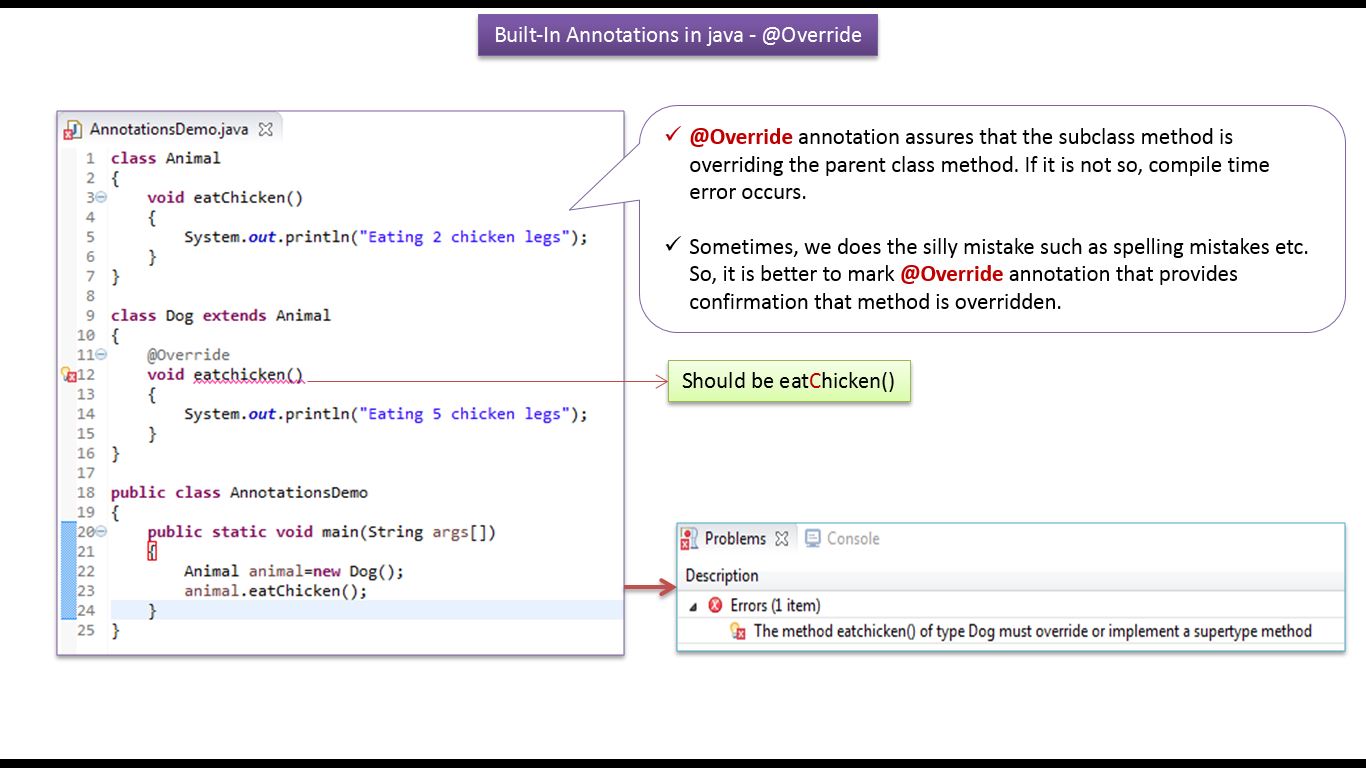
In certain cases, it's able to properly detect cardinality: The coolest thing is that JPA Buddy can show references even when there are no corresponding columns in the current table The attributes migration flow here is identical to what was described in the Entities from DB wizard section. To add attributes to the existing entity, choose From DB action in JPA Designer (1), Editor Toolbar (2) or from IntelliJ IDEA's "Generate" menu (3):Īfter that, the Reverse Engineering Columns wizard will appear:
Java annotations database schema update#
First, they add columns directly to the database and then update the JPA model. Some developers prefer the DB-first application development approach.
Java annotations database schema code#

JPA Buddy will generate the //todo comment with the corresponding quick-fix actions depending on the column type. If you want to postpone an attribute creation for specific columns, you can choose //todo comment as the mapping type. By simply selecting the attribute name and choosing the one to override, JPA Buddy assists in managing the inheritance.ĭuring entity generation, JPA Buddy alerts us if any inherited attributes from the are missing in the database, to align the model with the database access the "Generate DDL by Entities" action in the JPA Structure menu and select the "Existing DB update" option. In cases where the column name in the doesn't match the child entity's table, we can still inherit the attribute using the annotation. This allows the generated entities to extend from the parent class and automatically inherit all attributes that have the same name and type. JPA Buddy offers the ability to define a parent entity by selecting a class annotated with from the "Parent" drop-down box. Columns - new columns that are not yet mapped in the entity or parent References - optional associations that are not represented as a column in the observed table.Migrated Columns - columns that are already present in the entity (available only for mapped relations).Mapping type and attribute/converter/hibernate types are represented as drop-down lists.Īll attributes are divided into 3 categories: You can choose which attributes you want to add and change all their params, except "Column Name". The main part of the window allows you to configure everything related to attributes. Also, you will be able to define a class name in the corresponding field. Views - views that exist in the DB but are not mapped to entitiesĪfter selecting any element from the tree, a panel for migrating attributes from columns will appear.Tables - tables that exist in the DB but are not mapped to entities.Mapped Relations - tables and views mapped to JPA entities.On the left side of the window, you can see: Whether schema name should be specified in the annotationĪlso, from the "Other settings" drop-down list, you can move to the entity declaration and reverse engineering settings.Whether indexes and constraints need to be migrated.Source root and package where the generated entities will be saved.

The menu on the top of the window allows you to configure: In the IntelliJ IDEA Ultimate Edition, you can generate entities from DB via: In the IntelliJ IDEA Community Edition, you can generate entities from DB via:

The correct way to do it and possible issues are described in the separate documentation. The first thing you need to do to use the reverse engineering features is to create a DB connection.


 0 kommentar(er)
0 kommentar(er)
